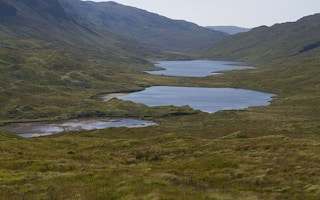There is fresh concern among scientists over the rises they are detecting in one of the chief greenhouse gases, methane.
A team of researchers from universities in Sweden and the US says methane is increasing in the atmosphere fast enough for emissions of the gas possibly to rise by between 20% and 50% before the end of the century.
Over a century, methane is 25 times more powerful as a greenhouse gas than carbon dioxide, the main gas contributing to global warming. But over a 20-year period, methane is 84 times more potent than CO2.
Many methane sources are poorly understood, including lakes at high northern latitudes. But the researchers hope this may change.
Water bodies
A study in Nature Geoscience describes how compiling previously reported measurements made at 733 northern water bodies − from small ponds formed by beavers to large lakes formed by permafrost thaw or ice-sheets – has enabled researchers to estimate emissions over large scales more accurately.
“The release of methane from northern lakes and ponds needs to be taken seriously,” says study leader Martin Wik, a PhD student at the Department of Geological Sciences and Bolin Centre for Climate Research, Stockholm University.
“These waters are significant, contemporary sources because they cover large parts of the landscape. They are also likely to emit even more methane in the future.”
“Efforts to reduce human-induced warming are even more urgent in order to minimise this type of feedback of natural greenhouse gas emissions”
Average temperatures in the Arctic are rising twice as fast as they are anywhere else in the world. At high northern latitudes, this warming means longer ice-free seasons. Together with permafrost thaw, this is likely to fuel methane release from lakes, potentially causing emissions to increase by between a fifth and a half by 2100.
Change on this scale would probably generate a positive feedback in future warming, causing emissions to increase still further.
“This means that efforts to reduce human-induced warming are even more urgent in order to minimise this type of feedback of natural greenhouse gas emissions,” says a co-author of the study, David Bastviken, senior lecturer in environmental change at Linköping University. Sweden. “In a sense, every reduction in emissions from fossil fuels is a double victory.”
Faster than expected
Two reports published last month raised concerns that methane emissions could be increasing faster than expected.
The first found that the quantity of methane leaking from the frozen soil during the long Arctic winters is probably much greater than climate models estimate.
Another study by US scientists said lakes worldwide are warming by an average of more than 1°C every 30 years − faster than either the oceans or the atmosphere.
The warming is expected to increase algal blooms, and to mean global methane emissions will rise by 4% over the next decade.










